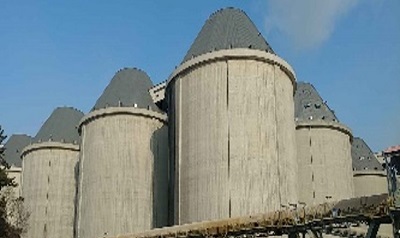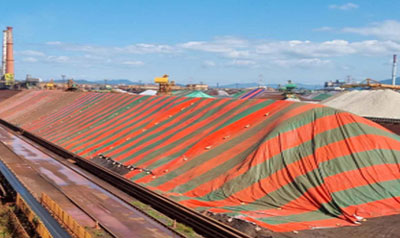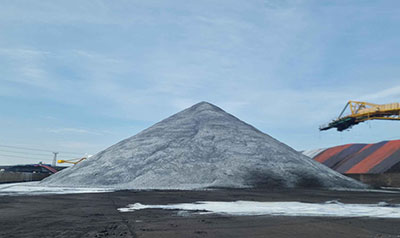Air Pollutants
POSCO promotes air quality improvement initiatives by complying with environmental regulations such as the Total Air Pollutant Emissions Management System and the Seasonal Fine Dust Management System, while proactively reducing fugitive dust emissions. Total emissions subject to control are designated as key management indicators. We apply stricter internal standards to maintain stable emission concentrations and monitor compliance 24/7 through the Environmental Control Office. To assess the environmental impact of air pollutants—including fugitive dust generated by steelworks—we install and operate environmental monitoring equipment and share real-time data with local communities via electronic display boards.
Air Pollutant Reduction
Despite external challenges such as unstable fuel supply and demand due to trade sanctions, POSCO is committed to reducing air pollutant emissions through the operation of pollutant control facilities and improvements in combustion efficiency.
Since 2004, we have been operating sulfur oxide(SOx) removal systems at our sintering plants using medium-density sintering and activated carbon adsorption. To reduce nitrogen oxide(NOx) emissions, we have installed Selective Catalytic Reduction(SCR) and Selective Non-Catalytic Reduction(SNCR) equipment at major emission sources, including sintering facilities and power plants. In addition, we operate over 1,500 dust collectors across the steelworks to minimize dust emissions. In 2022, we introduced two-stage dust collectors at eight blast furnaces(three in Pohang and five in Gwangyang) to treat residual gases generated during blowdown(temporary shutdown) and blow-in(restart), further reducing pollutant emissions.
Fugitive Dust Reduction
We are actively working to reduce fugitive dust emissions and improve the living environment for residents near our steelworks.
At open yards, we are progressively enclosing facilities, taking into account for the properties of fuels and raw materials, as well as operational efficiency. In addition, we are enhancing dust control through the use of dust covers, automated watering systems, and surface hardeners. In December 2019, POSCO signed a voluntary agreement with the Korean government to reduce fine dust emissions during the four-month high-concentration period from December to March. Under this agreement, the Ministry of Environment (MOE) has assigned us annual reduction targets that are stricter than those under the previous seasonal management system. We are fulfilling these targets by increasing the capacity utilization ratio and operational efficiency of our air pollutant reduction facilities.
Notably, during the fifth implementation period of the Seasonal Management System (December 2023–March 2024), Gwangyang Works was recognized as the top-performing site in the voluntary agreement evaluation for its outstanding contribution to reducing fine dust in the southern region.
-

Silo
-

Yard Dust Cover
-

Surface Hardner Application